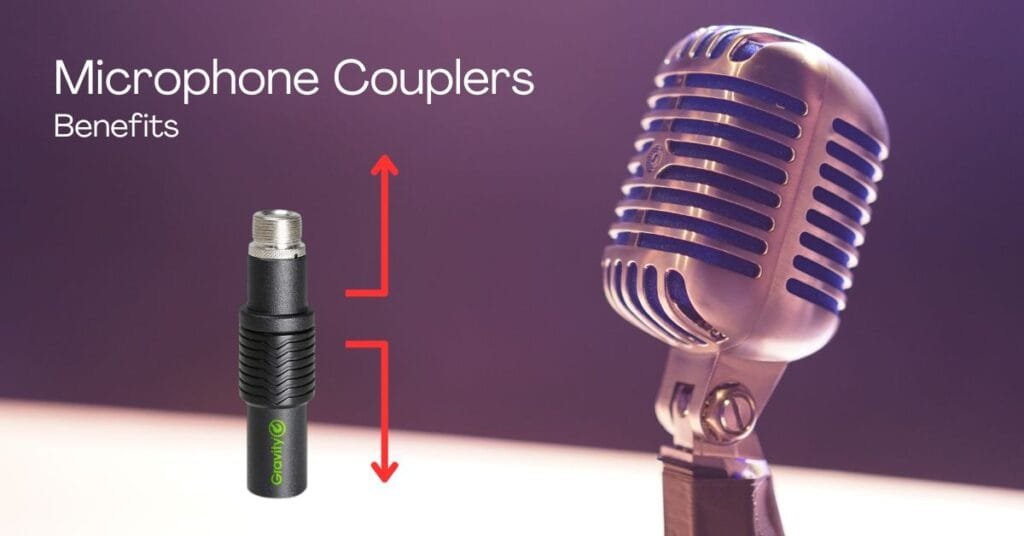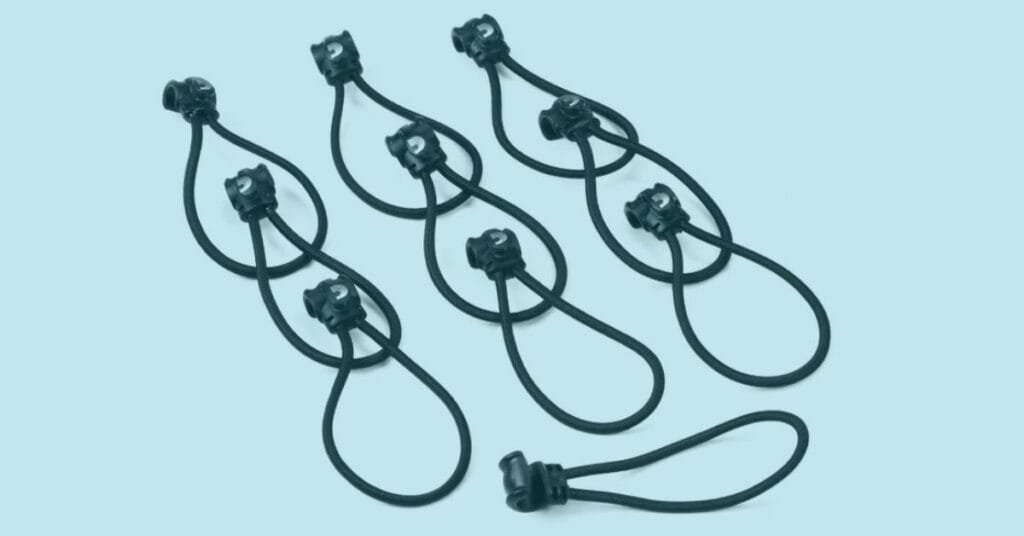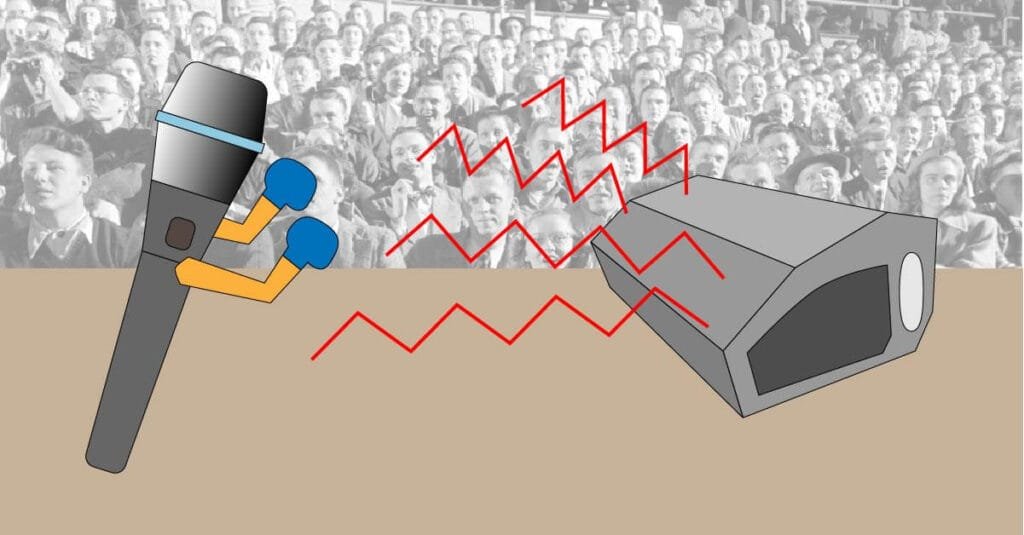The Easy Way: Benefits of Using Quick Release Couplers for Microphones
Introduction
Quick release couplers for microphones or quick release adapters for microphone stands are the solution for any musician or sound technician who is always on the lookout for streamlining their workflow. This small microphone stand adapter that is almost hard to notice may be the thing that will transform your gig, studio, or podcasting experience into an easy and sleek experience.
Many musicians have said “…it’s one of those things you don’t know you need until you get it…”. Audio setup will never be the same after incorporating these small couplers for microphone clips and boom arms alike.
What is a Quick Release Coupler?
The design of a microphone quick release is very simple and user-friendly. It allows you to attach and detach your microphone with their mic clip or a whole microphone boom arm in seconds. No more unscrewing mic clips that don’t fit the new mic you need to put on your mic stand and replacing them with new ones, once again wasting precious time on mounting them.
Different thread sizes are no longer an issue due to the elimination of screwing and unscrewing microphone clips, or thread adapters.
A mic stand quick release is designed to accommodate a wide range of microphone shapes and sizes. They are usually equipped with spring-loaded arms that securely hold your microphones in place.
It is as simple as that, detach one microphone with its mic clip and snap on a new set and you’re good to go. Be ready to experience a new level of convenience that will help your professional music career.
Many different names are used for this useful gadget. These are the names I’ve found so far:
- Quick release coupler for microphones
- Quick release mic adapter
- Microphone quick release
- Quick coupler for microphone clips and boom arms
- Quick connect coupler
- Microphone stand adapter
- Quick release connector
- Quick release mic clip
- Mic stand quick release
No wonder it is a bit harder finding out about them when you don’t even know what they are called.
How to mount a quick release coupler?
Mounting a quick release coupler couldn’t be easier. Every coupler has two parts. The main part is always fixed on a microphone stand. It usually has a 5/8 inch female thread, so all you have to do is securely screw it on your favorite microphone stand. If you are using a mic stand with a 3/8 inch thread that is common in Europe, you will need a thread adapter. The second piece, which is usually smaller is screwed into your dedicated microphone’s clip.
One microphone stand needs one main part from the coupler. Every microphone clip needs to have its own second part always mounted. Fortunately, you don’t have to buy the whole coupler for each microphone. Most manufacturers sell the smaller parts as separate products and are much cheaper than the whole thing.
If you use two microphone stands and let’s say 5 different microphones, you will need to buy two complete coupler sets that already have two upper smaller parts for two mics and three additional smaller parts for three more microphones.
When to use a quick release coupler?
Live
Small gigs are usually not associated with swapping mics during a concert. But a microphone going bad can happen and a coupler could save us some time. That scenario is still not that frequent that we should be using a coupler.
But what about using microphones that have an incorporated thread for microphone stands like the Shure Super 55 Deluxe, or ones that have mic holders that are always on the mic like the Shure SM7B?
Live gig scenarios when a coupler is needed:
- When a microphone has an incorporated thread for the mic stand
- When a microphone has a mic holder that is either always on the mic or needs time to mount
- When you need to use several different microphones during shows
My example
I used the Shure Super 55 Deluxe for two or three years before the thread wore out due to frequent mounting and unmounting to my mic stand. Not to mention the time it took to screw it on and off the stand. After the thread had worn out, I had to figure out how to mount the mic securely on the stand. I did some research and the quick release coupler was the answer.I had to use some thread-sealing tape to make the upper part of the coupler fit tight, but after that, it was just a piece of cake putting my mic on and off the mic stand.

I had to use some thread-sealing tape to make the upper part of the coupler fit tight, but after that, it was just a piece of cake putting my mic on and off the mic stand.

But I still had a small problem. The microphone output on the mic was too close to the mic’s chassis making the mic cable connector hard to connect because of the coupler’s width. The only way to deal with this is to find a microphone cable with very narrow connectors or to make the coupler a bit thinner in the middle part where it is the widest.
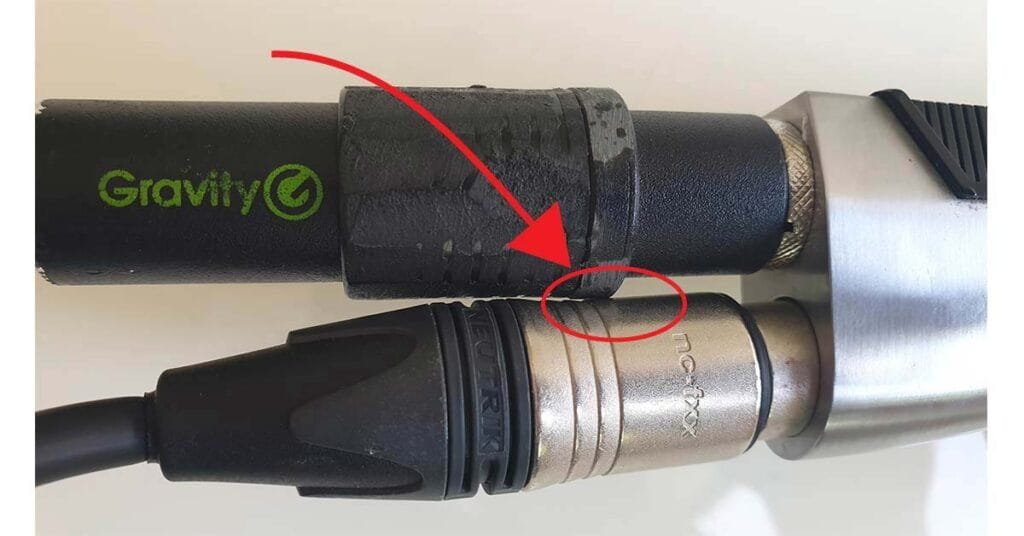
As you can see in the picture above, I tried to thin the coupler’s widest part in the middle, but the cable still couldn’t fit. I found some thinner microphone cable connectors but they wouldn’t last long.
In the studio
The studio is where a quick release coupler can be found more often than elsewhere. This is the place where changing various microphones is a normal routine. Lots of microphones for studio use have shock mounts and pop filters attached to them. Mounting these creatures can be a challenge!
Podcast
Similar to the studio, podcast shows may use different types of microphones where having to change them the old-fashioned way would consume a lot of time. Couplers are good to use when you are using your microphone on a guest podcast. If you use the RODE NT1 and need to mount it on someone else’s mic stand you need to do some work. Using a coupler will streamline this process.
Benefits of using a quick release coupler for microphones
Let’s dive a little deeper into the benefits of using quick release couplers.
1. Effortless attachment and detachment
The biggest advantage of using a quick release connector is the ease with which you can attach and detach your microphone with its dedicated mic clip.
2. Streamlined workflow
We all know that in the music business time is of essence, so since you spend less time on changing microphones, you have more time for other more important things like concentrating on your performance, sound check, or simply relaxing over a cup of coffee. The usual way of changing microphones and their clips includes not only screwing on and unscrewing mic clips off the stand but fine adjusting and tightening of parts as well.
3. Versatility
Quick release couplers can be used for every possible type of microphone that exists. Handheld, large diaphragm, and shotgun microphones, can all be used with couplers to make our work easier.
The size and shape of a microphone don’t make a difference when using couplers since all microphones use standard thread sizes for mounting.
4. Durability
Coupler clips for microphones are made of various durable materials that will provide you with years of effortless use with changing microphones. The traditional way of changing mic clips or using microphones that have incorporated threading will make the threads wear out over time. With the use of quick release couplers, we don’t have this problem.
5. Stability
Quick release couplers offer high stability, making sure that your microphone will securely stay in the position that you need. Whether in a normal position or hanging downward, your mic will always be secure.
How to choose the right microphone quick release coupler for your needs
There are not that many quick release couplers on the market to choose from. However, you should still try to choose a model that suits your needs the best.
Consider these factors when buying:
- Compatibility
- Stability
- Adjustability
Best quick release couplers:
2. On-Stage QK-10B Professional Quik-Release Microphone Adapter
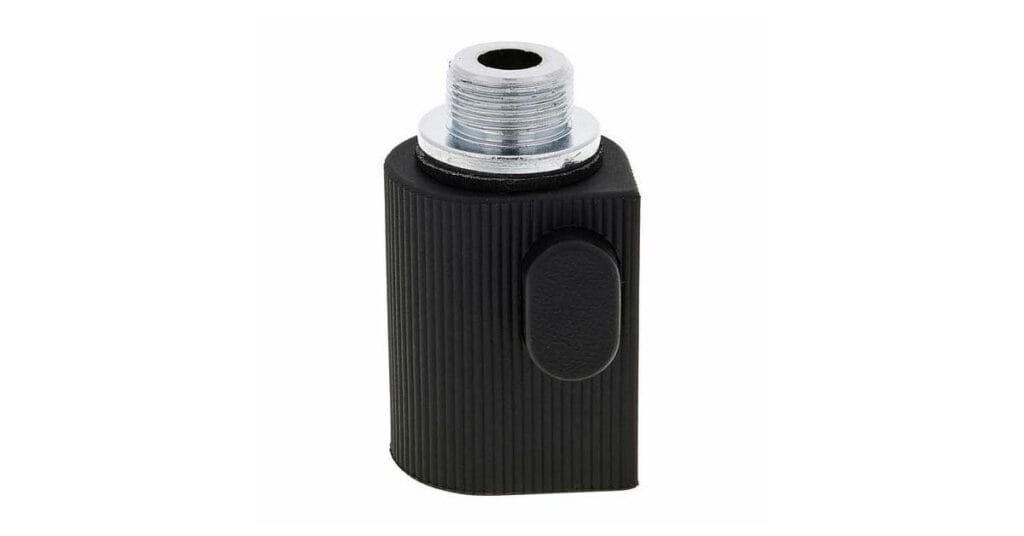
Main Features:
Cons:
3. On-Stage QK-2B Quick-Release Mic Adapter
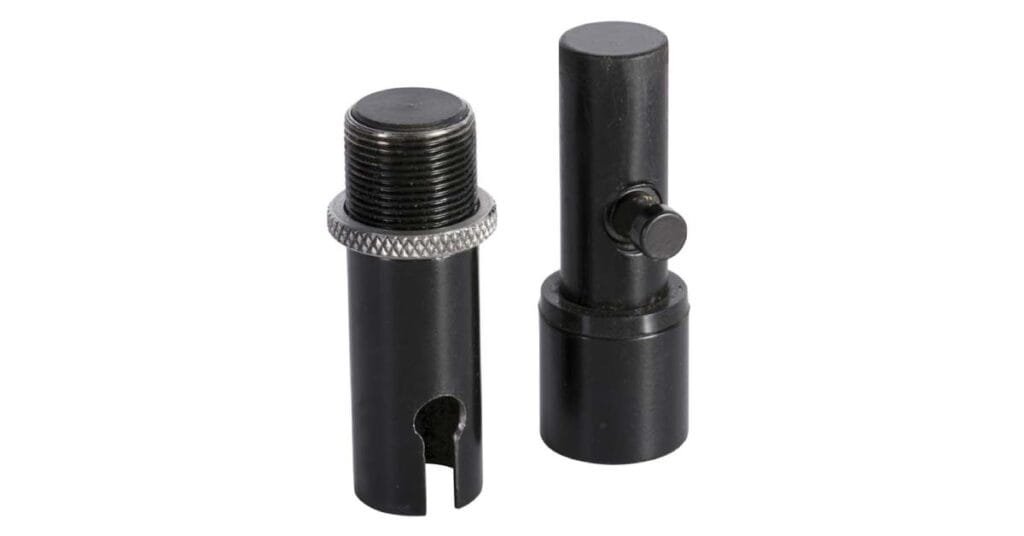
Main Features:
Cons:
4. K & M 23900 Quick-Release Adapter for microphones
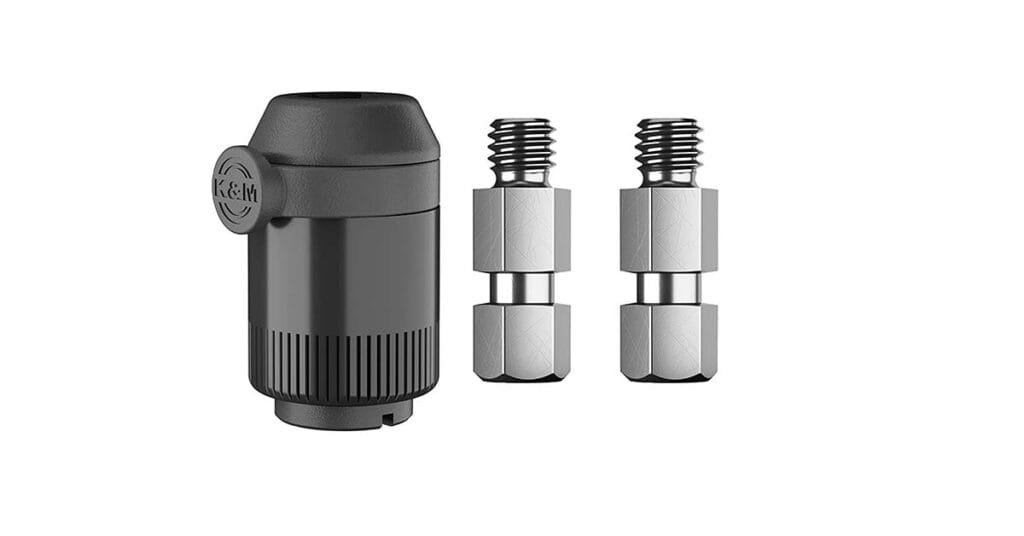
Main Features:
Cons:
5. Gator Frameworks Microphone Clip Quick Release Stand Attachment
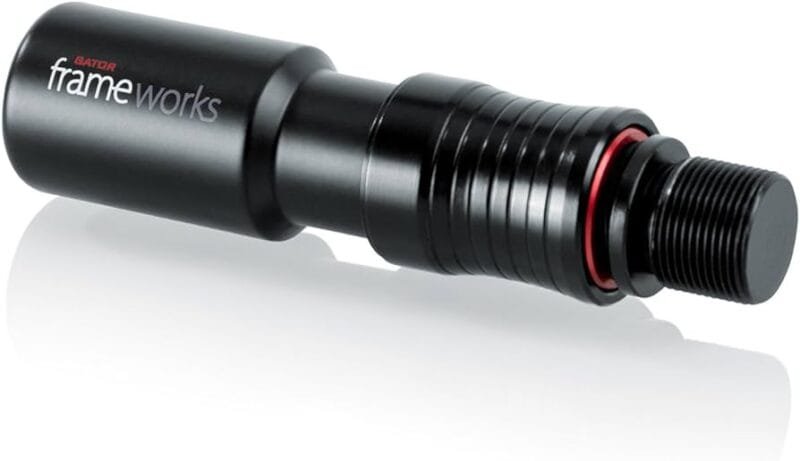
Main Features:
Cons:
6. Ultimate Support QR-1 – Quick Release Mic Stand/Mic Clip Adapter
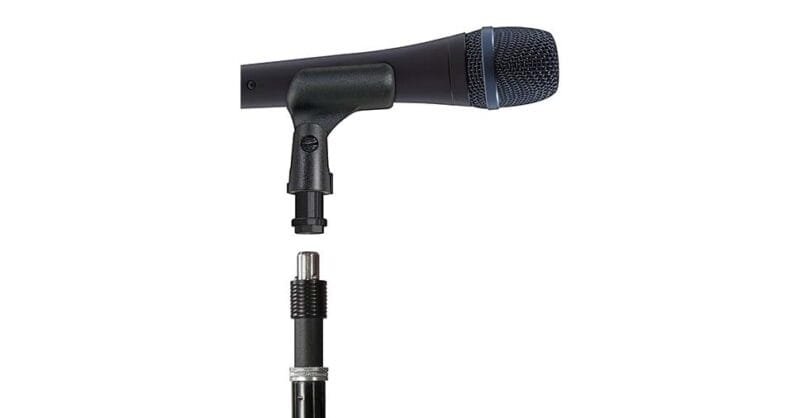
Main Features:
Cons:
Conclusion
We have covered the main features of quick release microphone adapters. As you can see, they can help us with our gigs in many ways. Effortless attachment and detachment are the main advantages. They are a good example of what we talk about on Easymusicgig. Small, yet with a big impact on how we manage musical instrument gear.
If you are looking for a way to speed up changing mics or are using mics that take time to mount and unmount, have a look at the coupler models mentioned above. They are a very affordable small piece of gear that will change the way you look at gigging, working in the studio or hosting a podcast.
